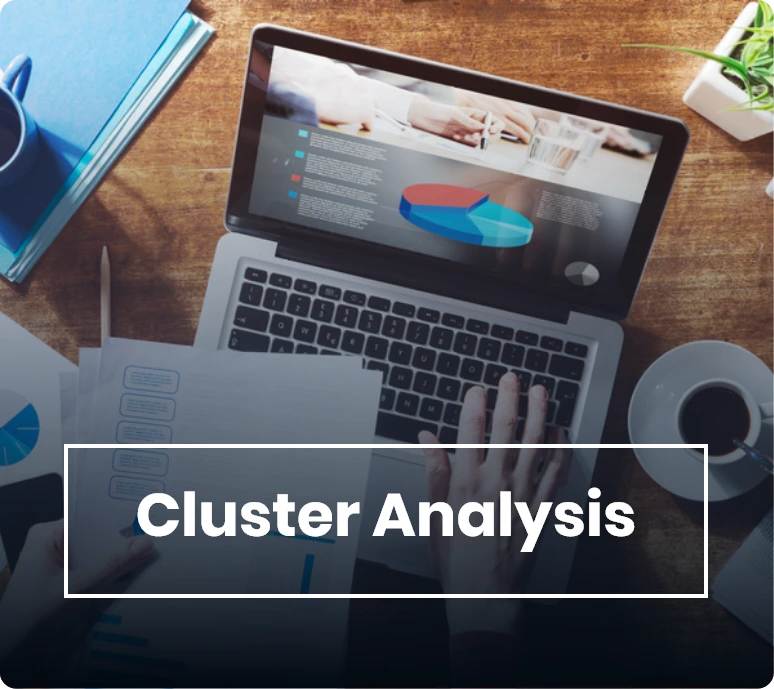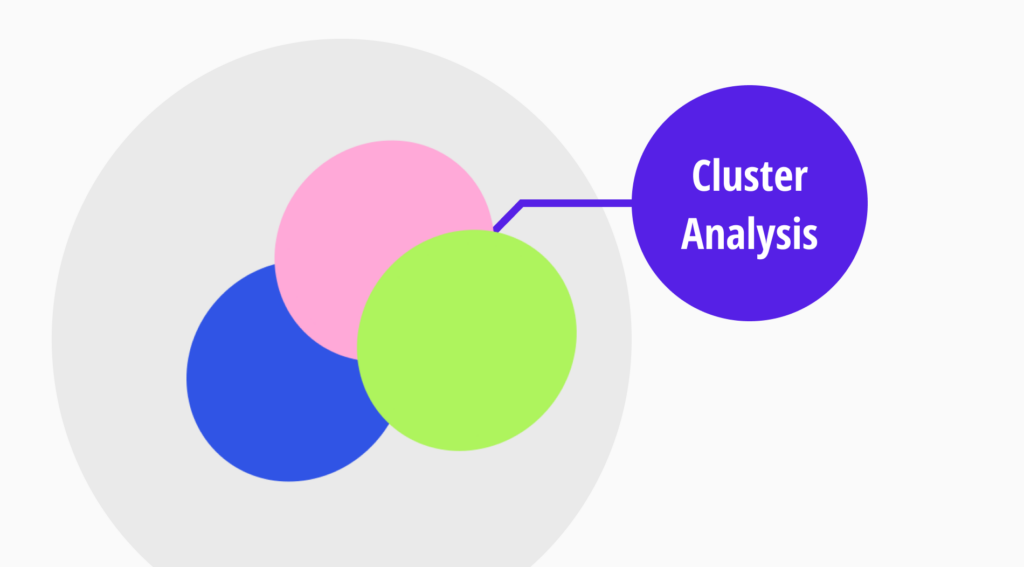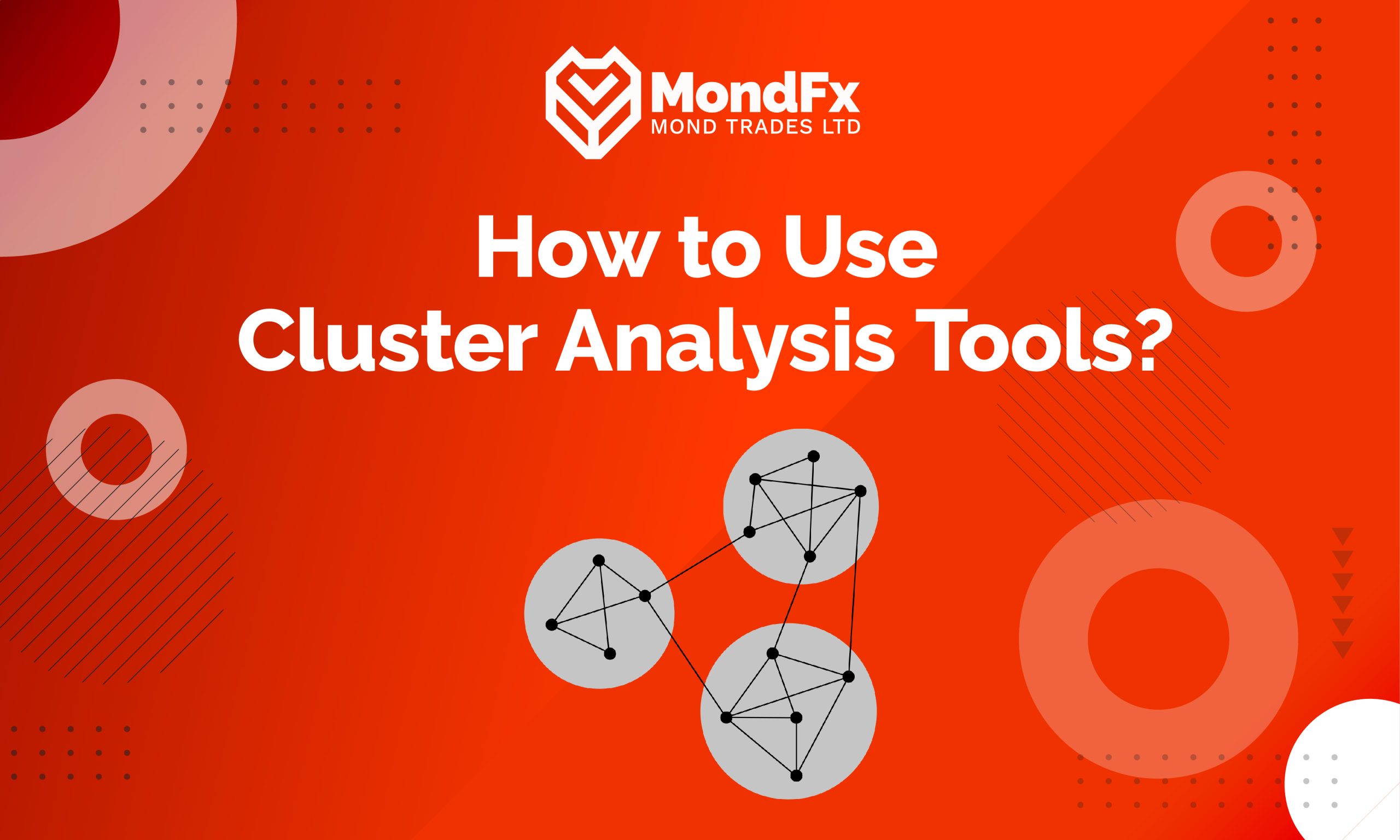In the era of information explosion and massive data, the ability to extract knowledge and insights from vast amounts of data has become a key competitive advantage. Clustering analysis, as one of the advanced techniques in data science and artificial intelligence, enables the discovery of hidden patterns and invisible structures within the data. By grouping similar objects or observations, it helps analysts and decision-makers gain a more comprehensive view of complex data. From financial markets to recommendation systems in e-commerce, clustering plays a vital role in shaping business strategies and optimizing processes. This article will provide a comprehensive review of this powerful technique, its applications across various industries, and the challenges and opportunities that lie ahead.
Definition of Clustering Analysis
Clustering analysis is a data mining and statistical analysis technique used to group a set of objects with similar characteristics. The primary goal of this method is to identify hidden structures in the data and create groups that are homogeneous within themselves and heterogeneous between each other. This process is carried out automatically, without the need for manual labeling of the data, utilizing unsupervised machine learning algorithms.
Definition of Clustering Analysis
Clustering analysis is a data mining and statistical technique used to group a set of objects with similar characteristics. The primary goal of this method is to identify hidden structures within the data and create groups that are homogeneous internally and heterogeneous externally. This process is performed automatically, without requiring manual labeling of the data, by utilizing unsupervised machine learning algorithms.
Importance and Applications of Clustering Analysis
Clustering analysis has significant applications across various fields. Here are some key applications and importance of this method:
- Financial Markets and Investment: Clustering analysis helps investors identify different groups of stocks with similar behaviors, enabling the development of diversified investment strategies. This reduces overall investment risk and facilitates better portfolio management.
- Market Research and Customer Management: In market research, clustering analysis assists in identifying different market segments and classifying customers based on shared characteristics. This allows businesses to design products and marketing campaigns more effectively, enhancing customer experience and loyalty.
- Bioinformatics and Life Sciences: In life sciences, clustering analysis is used to categorize genomic and proteomic data. This method helps researchers uncover hidden patterns in biological data, leading to a better understanding of biological functions.
- Social Network Analysis: In social networks, clustering analysis aids in identifying similar user groups based on their activities and interactions. This information can be used to improve services, increase engagement, and personalize content.
- Pattern Recognition and Data Mining: In various data mining domains, including fraud detection, clustering analysis helps identify unusual patterns in data, such as suspicious financial transactions.
Clustering analysis is a powerful tool that aids in strategic decision-making and process improvement by identifying hidden patterns and relationships within data. Utilizing this method enables businesses and researchers to gain new insights and extract greater value from their data.
Clustering Analysis Methods
Clustering analysis encompasses a variety of techniques, each designed based on different algorithms and concepts. These methods are used to group data based on similarities and common features. Here are some of the most important clustering methods:
- K-Means: One of the most popular methods, K-Means divides data into K clusters. This algorithm iteratively updates cluster centers by selecting initial centers and assigning data points to the nearest center until changes are minimal.
- K-Medoids: Similar to K-Means, this method uses medians instead of means as cluster centers, making it more robust against outliers.
- DBSCAN: This algorithm operates based on the density of data points and can identify clusters of various shapes. DBSCAN is suitable for datasets that contain noise and outliers.
- Gaussian Mixture Models (GMM): This method models data as a combination of multiple Gaussian distributions, calculating the probability of each data point belonging to different clusters.
- Hierarchical Clustering: This popular method can be divided into two main categories: agglomerative and divisive clustering. Both approaches create a tree structure of the data.
- Agglomerative Clustering: In this method, each data point is initially considered as a separate cluster. Gradually, the nearest clusters are merged until a single large cluster or a specified number of clusters is formed.
- Divisive Clustering: In contrast to agglomerative clustering, all data points are initially considered as one single cluster, which is then progressively divided into smaller clusters.
Hierarchical clustering is particularly useful due to its ability to create tree structures and provide visual representation, making it applicable in various fields, including bioinformatics, social network analysis, and text data analysis. These methods are especially beneficial when there is a need to analyze data at multiple levels.

Clustering Analysis Tools
In financial markets, clustering analysis is a powerful tool for uncovering hidden patterns and enhancing decision-making. Various tools are available for this purpose, each with its unique features and capabilities. Here are some of the most popular clustering analysis tools:
- Volfix: This tool has gained significant attention for its extensive capabilities in volume analysis and data clustering within financial markets. Volfix allows for precise market data analysis and is well-suited for professional traders.
- Ninja Trader: In addition to clustering analysis, this platform offers a variety of tools for technical analysis and trade management. Ninja Trader is known for its user-friendly interface and high level of customization.
- ClusterDelta: This tool provides advanced features for clustering analysis, helping analysts to examine market data more accurately. ClusterDelta is popular among analysts due to its reasonable cost and practical capabilities.
- SBPro: Focusing on volume analysis and clustering, this software allows traders to scrutinize market data with high precision. SBPro is appreciated for its low cost and high efficiency.
These tools facilitate deeper insights into market behaviors and support traders and analysts in making informed decisions.
Comparison of Free and Paid Tools
Cluster analysis tools can be broadly categorized into free and paid types. Each of these categories has its own advantages and disadvantages, which we will discuss below:
Free Tools: Free tools like TPO-v3 and HighVolumeBar-VerticalHistogram-v2 typically offer basic features. These tools are suitable for beginners and individuals looking to familiarize themselves with the fundamental concepts of cluster analysis. However, they may have limitations regarding advanced features and technical support.
Paid Tools: Paid tools such as Volfix and Ninja Trader provide more advanced functionalities, including in-depth volume analysis, support for historical data, and customization options. These tools are better suited for professional analysts and those seeking precise and comprehensive analysis in financial markets.
Key Features of Each Tool
Each clustering analysis tool has specific features that distinguish it for use in financial markets. Here are some of these features:
- Volfix: This tool focuses specifically on volume analysis and clustering in financial markets. Key features include advanced charting capabilities and the ability to analyze historical data.
- Ninja Trader: In addition to clustering analysis, it offers features like risk management and trading strategies. High customization options and support for various operating systems are also notable attributes.
- ClusterDelta: This tool is popular due to its reasonable cost and advanced capabilities, such as precise volume analysis and clustering. It also boasts ease of use and strong support.
- SBPro: With an emphasis on volume analysis and clustering, this tool enables traders to analyze market data with greater accuracy. Its low cost and acceptable performance are key features.
These features make each tool suited to different user needs, from beginner traders to professional analysts seeking detailed insights.
Conclusion and Applications of Clustering Analysis
Ultimately, the choice of the appropriate tool depends on the user’s needs and experience level. Clustering analysis tools provide diverse functionalities that assist analysts in making better decisions in financial markets and improving their trading performance.
Applications of Clustering Analysis
In financial markets, clustering analysis serves as a powerful tool for identifying patterns and enhancing investment decision-making. This method helps analysts break down complex and large market data into understandable groups, providing a clearer understanding of market conditions. Here are two primary applications of clustering analysis in financial markets:
Market Profile Analysis
Market profile analysis focuses on identifying hidden structures and trading patterns in the market. This analysis helps traders recognize the strengths and weaknesses of the market, allowing for more informed trading decisions. Some benefits of market profile analysis include:
- Identifying Key Price Areas: Clustering analysis can reveal key price areas with high trading volumes. These areas may serve as significant support and resistance levels for trading decisions.
- Detecting Market Trends: Clustering analysis aids traders in better identifying market trends and determining optimal entry and exit points, which can enhance investment performance.
- Improving Trading Strategies: By gaining a better understanding of market structures and trading patterns, analysts can refine their trading strategies and reduce risk.
In summary, clustering analysis plays a crucial role in providing insights that lead to improved trading strategies and better decision-making in financial markets.
Volume Analysis
Volume analysis is one of the key applications of clustering analysis in financial markets. This analysis examines price movements and trading volumes, assisting traders in making optimal decisions. Some benefits of volume analysis include:
- Identifying Significant Market Changes: By analyzing trading volumes, important changes in the market can be detected. A sudden increase in trading volume may indicate significant shifts in market trends.
- Determining Entry and Exit Points: Volume analysis helps traders identify optimal entry and exit points based on changes in volume. This can reduce risk and increase potential profits.
- Evaluating Trend Strength: Trading volume is often used as an indicator to assess the strength of trends. Clustering analysis can help identify strong and weak trends, leading to better decision-making.
In summary, volume analysis is a crucial component of clustering analysis that enhances traders’ ability to navigate the complexities of financial markets by providing insights into market dynamics and potential trading opportunities.

Market Segmentation
Clustering analysis is an effective tool for identifying different market segments. This process helps businesses divide their target market into homogeneous groups and adopt more effective marketing strategies. Here are some benefits of market segmentation:
- Optimal Resource Allocation: By identifying various segments, companies can allocate their resources more efficiently and focus on the areas that offer the highest profitability.
- Improved Marketing Strategies: Accurate identification of market segments allows businesses to design their marketing messages more precisely, addressing the needs and wants of different groups.
- Increased Competitiveness: A better understanding of various market segments enables companies to strengthen their competitive advantages and perform better against rivals.
Customer Segmentation
Customer segmentation is another key application of clustering analysis in market research. This process helps companies group their customers based on shared characteristics. Some benefits of customer segmentation include:
- Personalized Customer Experience: By segmenting customers, businesses can tailor the customer experience and offer products and services based on the specific needs of each group.
- Improved Customer Satisfaction: A better understanding of customer needs and preferences allows companies to provide superior services, enhancing customer satisfaction.
- Increased Customer Loyalty: Accurate customer segmentation helps businesses implement more effective customer retention strategies, strengthening customer loyalty.
In summary, clustering analysis is recognized as an effective method for identifying patterns and improving investment decision-making in financial markets. By utilizing this technique, analysts can simplify the analysis of complex market structures and gain a clearer understanding of market conditions. Market profile analysis and volume analysis are two primary applications of clustering analysis in financial markets, helping traders make better decisions and enhance their investment performance.Bottom of Form
Advantages and Disadvantages of Clustering Analysis
Advantages of Using Clustering Analysis
Clustering analysis, as one of the main techniques in data mining and statistical analysis, offers several benefits:
- Identifying Hidden Patterns: Clustering analysis helps uncover patterns and hidden relationships in the data. This feature enables analysts to easily separate and analyze complex structures.
- Efficient Segmentation: This method automatically divides data into homogeneous groups, which can be useful for improving decision-making and strategic planning.
- Reducing Data Complexity: By breaking down large and complex datasets into smaller, more manageable clusters, clustering analysis helps reduce complexity and enhance data interpretability.
- Wide Applicability: Clustering analysis is utilized across various fields, including marketing, bioinformatics, social network analysis, and financial markets.
- Customization and Personalization: It allows for the customization of products and services based on the needs of different customer groups, potentially increasing customer satisfaction and loyalty.
In summary, clustering analysis provides valuable insights and enhances the ability to make informed decisions across multiple domains.
Challenges and Limitations of Clustering Analysis
Despite the advantages of clustering analysis, this method is accompanied by several challenges and limitations:
- Determining the Number of Clusters: One of the main challenges is determining the appropriate number of clusters. Incorrect selection can lead to misleading analyses and unreliable results.
- Sensitivity to Outliers: Some clustering algorithms, such as K-Means, are sensitive to outliers, which can skew the results of the analysis.
- Need for Data Scaling: In many cases, data must be scaled before clustering, which can add complexity to the process.
- Lack of Transparency: Understanding and interpreting the results of clustering analysis can be difficult for some users, especially when dealing with very complex data.
- Time-Consuming Calculations: Clustering analysis can be time-consuming for large datasets and may require significant computational resources.
In summary, clustering analysis is a powerful tool with wide-ranging applications in data analysis and strategic decision-making. However, like any tool, it has challenges and limitations that need to be considered. By effectively managing these challenges and leveraging the benefits, analysts can use clustering analysis to enhance business processes and improve efficiency.
Case Studies
Examples of Successful Applications
Clustering analysis has been applied in various industries with successful outcomes. Here are a few examples of these applications:
- Financial Markets: Many investment firms use clustering analysis to identify groups of stocks with similar behaviors. For instance, they can identify stocks that react similarly under similar economic conditions, allowing them to create a more diversified investment portfolio. This approach can lead to reduced risk and increased returns.
- Retail: A large retail company has utilized clustering analysis to segment customers based on purchasing patterns. By identifying groups of customers with similar needs, the company has been able to implement more targeted advertising and increase sales.
- Healthcare: In one study, hospitals employed clustering analysis to identify disease patterns and enhance patient services. By analyzing patient data, these hospitals were able to detect disease trends and implement quality improvement programs in care.
These examples illustrate how clustering analysis can drive strategic decision-making and improve performance across different sectors, ultimately leading to better outcomes and increased efficiency.

Analysis of Results and Impacts
Clustering analysis has yielded significant results and impacts in the aforementioned examples:
- Improved Decision-Making: In financial markets, clustering analysis has assisted companies in making better investment decisions and reducing risks associated with their portfolios. This has led to increased profitability and greater investor satisfaction.
- Enhanced Efficiency and Productivity: In retail, using clustering analysis for customer segmentation has improved the effectiveness of marketing campaigns and boosted sales. This approach has enabled companies to allocate resources more optimally, resulting in higher returns.
Case studies indicate that clustering analysis is a powerful tool for enhancing processes and decision-making across various industries. When used effectively, organizations can achieve successful outcomes and positively impact their performance. Leveraging clustering analysis can lead to improved efficiency, reduced risk, and increased customer satisfaction.
Summary of Key Points
Clustering analysis, as an important technique in data mining and statistical analysis, plays a vital role in improving decision-making processes across various industries. By grouping similar data into homogeneous clusters, it helps organizations and analysts identify hidden patterns and relationships.
Successful applications include the financial markets, where clustering analysis is utilized for risk management and portfolio optimization. In retail, it aids in identifying customer purchasing patterns and enhancing marketing strategies. In healthcare, clustering analysis contributes to improved quality of care by more accurately identifying disease patterns.
However, clustering analysis also faces challenges, such as determining the appropriate number of clusters and sensitivity to outliers. These limitations require careful management and the use of suitable algorithms.
Overall, when implemented effectively, clustering analysis can lead to significant improvements in efficiency, risk reduction, and customer satisfaction.
Recommendations for Optimal Use
To fully leverage clustering analysis and optimize its application, consider the following key points:
- Choose the Right Algorithm: Selecting an appropriate algorithm based on the data type and analysis goals is crucial. Options like K-Means, DBSCAN, or hierarchical clustering each have their strengths and weaknesses that should be evaluated.
- Data Preprocessing: Prior to conducting clustering analysis, data should be meticulously preprocessed. This includes cleaning the data, removing outliers, and normalizing features to achieve more accurate results.
- Determine the Optimal Number of Clusters: Utilizing methods such as the silhouette score or the elbow method can aid in determining the appropriate number of clusters. Incorrectly selecting the number of clusters can lead to misleading analyses.
- Evaluate Results: After performing clustering analysis, it’s important to assess the results and ensure their validity and reliability. Comparing the outcomes with real data and practical experiences can enhance the accuracy of the analyses.
- Integrate with Other Techniques: To improve precision and usability, clustering analysis can be combined with other data mining and machine learning techniques. This approach aids in more accurately identifying patterns and enhancing predictions.
- Training and Empowering Teams: For optimal use of clustering analysis, training and empowering staff in the use of analytical tools and techniques is essential. Skilled teams can leverage these techniques to improve processes and decision-making.
By following these recommendations, organizations can maximize the effectiveness of clustering analysis and derive greater insights from their data.Top of Form
Conclusion
Clustering analysis is a powerful technique in data mining and statistical analysis that aids in identifying patterns and hidden relationships by grouping similar data. This method has widespread applications across various industries, including financial markets, retail, and healthcare, leading to improved decision-making, increased efficiency, and enhanced services.
Despite challenges such as determining the appropriate number of clusters and sensitivity to outliers, proper utilization of clustering analysis can assist organizations in optimizing processes, reducing risk, and increasing customer satisfaction. To fully leverage this technique, it is essential to focus on selecting the right algorithm, preprocessing data, accurately evaluating results, and integrating with other analytical methods. Ultimately, clustering analysis serves as a valuable tool for organizations, enabling them to gain deeper insights and enhance overall performance.

